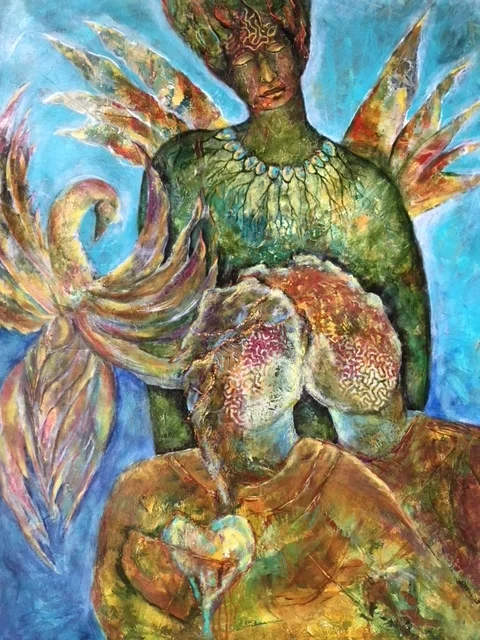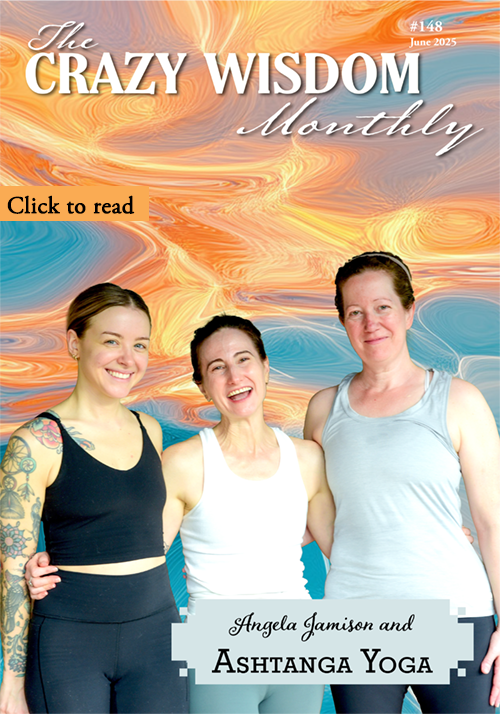By Jill H. Andrews
It’s time to wake up to the realization that artistic creativity promotes health and well-being at any age. As a lifelong learner and nascent artist, I've experienced some of the health benefits of artistic creativity since retiring from a 30-year career in university administration.
Immersion in an academic environment taught me the value of research, which strongly supports the connection between artistic creativity and health and well-being. As we age, our world doesn't have to shrink to the point of disappearance. Rather, the last third (or so) of life can be about new and continued growth, and experiencing the joy of creative pursuits.
Portrait Sculpture
Studies show, for example, that many areas of the brain are stimulated in positive ways by artistic enrichment. The base of the brain (or brain stem) responds to touch (what better way to touch than creating through making stuff with your hands?). The midbrain responds to music and dance. The limbic region responds to art, play and play therapy, and dance. The cortical region responds to art, storytelling, drama, and writing.
Here are just a few art-related activities and health benefits -- some of these are from my own experience, and others are courtesy of Veo Art Studio in Chelsea.
- Build up your fine motor skills by working with clay (sculpting), weaving, jewelry-making, painting, and drawing. Since I began making dolls and creatures in my home studio, I've discovered the joys of improved manual dexterity -- not to mention the joy of learning that my sewing and painting skills have greatly improved.
- Express your feelings and moods through the use of color, texture, and structure. Working with clay is especially great for working off stress! Last year, I took a portrait sculpture class at Veo Art Studio. I was absolutely amazed at the result!
- Develop your problem-solving skills through open-ended art activities. This could include decision-making related to planning a drawing or painting, choosing a palette, or structuring a sculpture.
- Strengthen language and enrich communication skills by creating and writing stories to support your art. This has been one of my most enjoyable post-retirement pursuits: illustrating a blog about healthy aging. The blog has given rise to an unexpected, fledgling career as a cartoon artist. The adventures art offers seem to never cease!
- To shape social and emotional skills, discuss your art pursuits and processes with others. Titling your art provides the opportunity to use your art as a language.
- Reduce your risk for dementia by learning to work with new materials and using new methods. Introducing new methods and materials stimulates the brain while boosting your sense of accomplishment and increased sense of creativity.
Evidence is mounting in favor of increased community and government sponsored programs that provide broader access to artistic pursuits while enriching the lives of nascent artists of any age. Veo Art Studio is one local resource where this is true. As one who continues to benefit from local art classes, I applaud anyone who explores the wonders of creativity and will likely reap the rewards of health and well-being.
Jill H. Andrews is a writer, maker and artist who lives in Chelsea, Michigan. She authors two illustrated blogs: Diehard Brain is about healthy living; her website blog presents humorous moments in life from an artists’ view. At her Maker Dolls studio, she creates non-traditional mixed media dolls, animals and fantasy creatures. She also teaches classes at Veo Art Studio.
Resources, links:
Gene D. Cohen, MD, PhD. “The Creative Age: Awakening Human Potential in the Second Half of Life.”
Gene D. Cohen, MD, PhD. Research on Creativity and Aging: The Positive Impact of the Arts on Health and Illness, American Society on Aging, Spring 2006.
Ellen Booth Church, “Learning through the Arts.”




































































































































































































